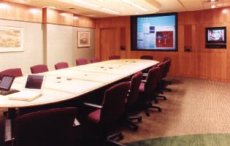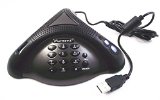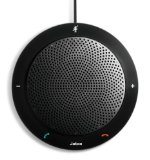Video Conferencing Design
 Video-conferencing has seen rapid growth as the digital age makes the data transmission between stations more economical and widely available. Where it was once necessary to rent or install expensive facilities to communicate using broadband video and satellite or fibre links, it can now be done using video codecs capable of operating over more affordable 384kbps data lines, and those systems can connect to even less expensive rollabout units, or even a desktop PC. Increasingly, the conventional "talking head" video conference installation is being extended with interactive elements that make the room more suitable to technical and engineering applications and collaborative design. These may include electronic white boards and host PC's for shared drawings or documents, and video input devices such as document cameras, document scanners, and slide to video converters. Combining video conferencing and computer data interconnection over the Internet can turn a video conference room into an effective workroom, or a situation room.
Video-conferencing has seen rapid growth as the digital age makes the data transmission between stations more economical and widely available. Where it was once necessary to rent or install expensive facilities to communicate using broadband video and satellite or fibre links, it can now be done using video codecs capable of operating over more affordable 384kbps data lines, and those systems can connect to even less expensive rollabout units, or even a desktop PC. Increasingly, the conventional "talking head" video conference installation is being extended with interactive elements that make the room more suitable to technical and engineering applications and collaborative design. These may include electronic white boards and host PC's for shared drawings or documents, and video input devices such as document cameras, document scanners, and slide to video converters. Combining video conferencing and computer data interconnection over the Internet can turn a video conference room into an effective workroom, or a situation room.
The Elements of Video Conferencing
A video conference facility is made up of the room, the video pickup and display component, the audio pickup and delivery system, and the codec (code/decode) that is used to convert the signals into a compressed digital form to be transmitted. While the codec and the available transmission bandwidth largely determine what the best transmitted audio and video signal quality can be, it is still important to design the other components for optimum performance. It is important to remember that when there is a requirement for upgradability the easiest item to improve is the codec and the network connection, so the design of the room, and the audio and video components should support foreseeable improvements in transmission bandwidth.
The Room
The video conference room has a tremendous impact on the audio and video systems used in that room. The room acoustics affects both the microphone pickup and the audio playback in the room. Where there is full duplex voice communication, the room acoustics are a critical element in minimizing the echo-cancellation problems, and potential feedback problems. HVAC noise, reverberation and reflections that may not be noticeable to a person seated in the room can be problematic when a microphone is opened in the room. A microphone does not have the sophisticated biological processing that the human brain has for ignoring unwanted sounds in favour of the important sounds.
Ambient light affects the quality of the video display as well. Where there are reflections of light sources on the video display screen or lack of contrast caused by elevated ambient light levels the image quality will be significantly degraded.
You might also like




|
Video conferencing omnidirectional Echo canceller microphone / speakerphone support USB drive free and support Skype Dial CE (NMT)
|
|
Blackwire C435 - - Modular Design Gives End Users A Choice Of Mono Or Stereo Audio Options And Wearing Styles- Low Profile Design Is Ideal For Video Conferencing, Pc Telephony And Other Multi-Media A CE (WASX) |
|

|
Jabra SPEAK410 USB Speakerphone for Skype, Lync and other VoIP calls - Retail Packaging - Black Wireless (Jabra)
|





